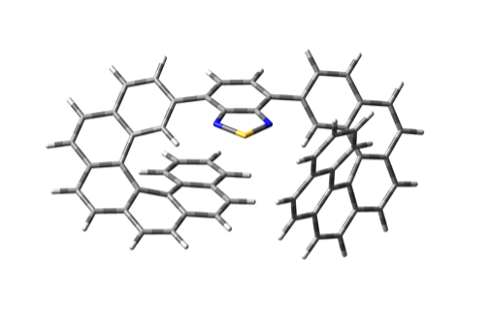Professor Marco Caricato named July 2024 Sutton Family Research Impact Award recipient

The Department of Chemistry congratulates Professor Marco Caricato on receiving the July 2024 Sutton Family Research Impact Award!
The Sutton Award is a monthly competition among chemistry faculty. Every month, the Chemistry Department Chair and Associate Chairs review the peer-reviewed papers published by chemistry faculty from the three previous months to select a winner. The recipient receives a $500 cash prize and is featured on the departmental website.
For a full list of winners, visit our Sutton Family Research Impact Award webpage.
Helicene Appended Benzothiadiazoles as Chiral Emitters
By Kévin Martin, Tal Aharon, Maurizio Mastropasqua Talamo, Andreas Hauser, Thomas Bürgi, Nicolas Vanthuyne, Marco Caricato, and Narcis Avarvari
Chem. Eur. J. 2024, 30, e202401413
https://doi.org/10.1002/chem.202401413
The strongly emitting 2,1,3-benzothiadiazole (BTD) unit has been extensively used over the years in the field of organic electronics, in the composition of materials for organic and dye sensitized solar cells, organic light-emitting diodes, organic field-effect transistors, but also as fluorescent probes[18] or polymeric thermometers. Nevertheless, when considering the excellent emissive properties of BTD derivatives it is rather surprising that the number of chiral representatives is relatively limited. Molecular materials embedded with CPL activity are gaining more and more interest in view of their possible use in various fields such as CP-OLEDs, bio-responsive imaging, or anti-counterfeiting applications. A homologous series of 4,7-bis(aryl) substituted BTD compounds, containing the helicenic derivatives bis([4]helicene), bis([5]helicene) and bis([6]helicene), have been prepared and characterized using a series of experimental and computational techniques. Their chiroptical properties have been investigated in correlation with density functional theory (DFT) calculations, which allowed to confidently assign the absolute configuration of the helicene arms and to characterize the different electronic transitions, including the low energy charge transfer excitation from helicenes to BTD.
